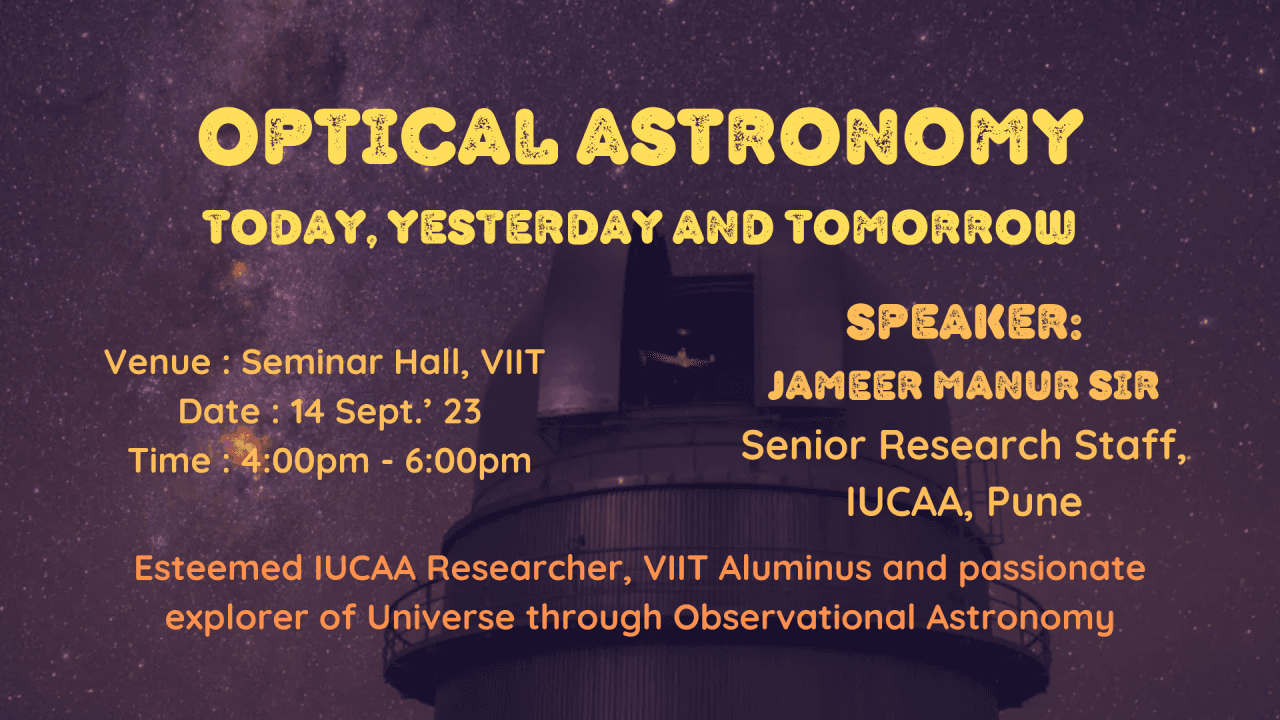Event Overview
- Speaker: Aditya Bhoite (Antariksh Core)
- Date: 18th august'2024
- Location: Lecture Hall 1409, Electronics and Telecommunication (EnTC) Department, VIT

Attendance
- Number of Attendees: 12 students
- Participants: Students from the Antariksh club and other interested individuals from VIT and VIIT colleges
Purpose of the Talk
The primary objective of this internal talk was to explore the fascinating field of astrophysics, focusing on the electromagnetic spectrum, particularly radio waves, and their significance in understanding the structure of the universe. Aditya Bhoite aimed to provide insights into the early structures of the universe and the fundamental concepts of electromagnetic radiation, alongside recommended literature for further exploration.
Presentation Highlights
1. Introduction to the Electromagnetic Spectrum:
- Aditya introduced the electromagnetic spectrum, explaining how it is divided into various regions such as radio, ultraviolet, visible, and infrared. He emphasized that these divisions are based on the characteristics of electromagnetic waves and their interactions with matter.
2. Understanding Early Structures:
- The talk included a discussion on electromagnetic radiation in the radio window, where Aditya described how, when the scale of a system is much larger than the wavelength, radiation can be treated as traveling in straight lines (rays).
3. Key Definitions:
- Aditya provided detailed definitions of critical terms such as:
- Brightness: The perceived luminosity of an object.
- Luminosity: The intrinsic energy output of an object measured in watts.
- Intensity: The concentration of energy passing through a unit area per unit time.
4. Mathematical Representation:
- The infinitesimal power intercepted by a small surface area was presented mathematically, enhancing the understanding of how these concepts are applied in astrophysics.
5. Recommended Reading Resources:
- Aditya shared a list of books for further study, including:
- "An Introduction to Modern Astrophysics" by Bradley W. Carroll and Dale A. Ostlie
- "Galactic Astronomy" by James Binney and Michael Merrifield
- "Cosmology: The Science of the Universe" by Edward Harrison
- "The Early Universe" by Edward Kolb and Michael Turner
- "The First Three Minutes: A Modern View of the Origin of the Universe" by Steven Weinberg
Student Engagement
- The talk fostered an interactive environment, allowing students to ask questions and engage in discussions regarding the topics covered. The attendees expressed keen interest in the subject matter, leading to a fruitful exchange of ideas.
Conclusion
The internal talk by Aditya Bhoite was a significant contribution to the Antariksh club's initiatives, effectively promoting interest in astrophysics among students. The detailed presentation on radio waves and galactic structures provided valuable insights and encouraged further exploration of the universe. The event successfully met its objectives, enhancing the participants' understanding of complex astrophysical concepts.
Recommendations
- Future Talks: Organizing more talks on related topics to maintain interest and expand knowledge in astrophysics.
- Workshops: Consider workshops that include hands-on activities related to astronomical observations or data analysis.
- Collaboration: Explore collaboration with other clubs or departments to widen the audience and enhance learning opportunities.



